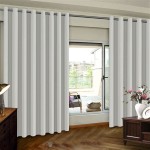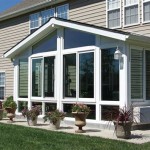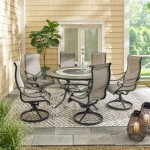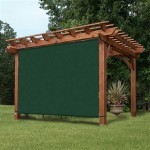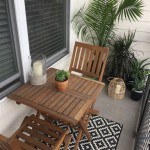Patio and Garden Furniture
Furnishing a patio or garden transforms an outdoor space into a functional and aesthetically pleasing extension of the home. Choosing the right furniture involves considering various factors, including material, style, durability, and maintenance requirements. From intimate seating areas to expansive dining spaces, patio and garden furniture facilitates relaxation, entertainment, and enjoyment of the natural surroundings.
Material Selection
The materials used in patio and garden furniture significantly impact their longevity, appearance, and resistance to the elements. Popular choices include wood, metal, wicker, and plastic. Wood offers a classic, natural look but requires regular maintenance to prevent weathering and decay. Metal furniture, particularly aluminum and wrought iron, is durable and weather-resistant, while wicker, often made from synthetic materials, provides a lightweight and versatile option. Plastic furniture is typically the most affordable and requires minimal upkeep.
Style and Design
Patio and garden furniture styles range from traditional to contemporary, offering homeowners ample choices to complement their existing decor and personal preferences. Classic designs often incorporate ornate details and natural materials, while modern styles emphasize clean lines and minimalist aesthetics. Choosing a cohesive style ensures a harmonious and visually appealing outdoor space.
Durability and Weather Resistance
Outdoor furniture is exposed to the elements, making durability and weather resistance crucial factors. Furniture constructed from weather-resistant materials like aluminum, teak, or all-weather wicker can withstand harsh weather conditions, including rain, sun, and temperature fluctuations, ensuring long-lasting performance and minimizing maintenance.
Comfort and Ergonomics
Comfort is paramount when selecting patio and garden furniture. Features like cushioned seating, adjustable backrests, and ergonomic designs enhance relaxation and enjoyment. Considering the intended use of the furniture, whether for lounging, dining, or conversation, is crucial for selecting pieces that provide optimal comfort and support.
Maintenance and Care
Proper maintenance is essential for preserving the appearance and longevity of patio and garden furniture. Regular cleaning, protective covers, and occasional refinishing or repainting can help prevent damage from weather, dirt, and pests. Understanding the specific maintenance requirements for each material ensures the furniture remains in optimal condition for years to come.
Space Planning and Functionality
Before purchasing furniture, carefully assess the available space and its intended function. Measure the area to ensure the furniture fits comfortably without overcrowding the space. Consider the traffic flow and create designated areas for different activities, such as dining, lounging, and entertaining. Thoughtful space planning maximizes functionality and creates a welcoming and organized outdoor environment.
Budget Considerations
Patio and garden furniture is available at various price points, allowing homeowners to find options that fit their budget. While higher-end materials and designs often come with a higher price tag, affordable alternatives are readily available. Establishing a budget beforehand helps narrow down choices and ensures a cost-effective approach to furnishing an outdoor space.
Accessorizing and Enhancing the Space
Accessories can significantly enhance the ambiance and functionality of a patio or garden. Outdoor rugs, cushions, throws, and lighting create a cozy and inviting atmosphere. Umbrellas and shade sails provide protection from the sun, while fire pits and outdoor heaters extend the usability of the space into cooler evenings. Thoughtfully chosen accessories can personalize the space and create a comfortable and stylish outdoor retreat.
Sustainability and Environmental Impact
Increasingly, consumers are considering the environmental impact of their purchasing decisions. Choosing furniture made from sustainable materials, such as recycled plastic or responsibly sourced wood, contributes to a more eco-conscious approach to outdoor living. Furthermore, opting for durable and long-lasting furniture reduces the need for frequent replacements, minimizing waste and environmental impact.
Accessibility and Inclusivity
Creating an accessible and inclusive outdoor space is essential for ensuring everyone can enjoy the area. Consider incorporating features like ramps, wider pathways, and furniture with appropriate heights and armrests to accommodate individuals with mobility challenges. Thoughtful design choices can create a welcoming and comfortable environment for all.

Los Muebles Ideales Para Terrazas Pequeñas

Compra Muebles Para Terraza Y Jardin En Mallorca Con Portic Mobles

Muebles De Exterior Para Hacer Tu Casa Un Hogar Más Sostenible

Terrazas Homecenter Com Co

Patio Top Garden Furniture Muebles De Jardín Excepcionales Para Lugares

Venta De Muebles Para Exteriores Terrazas Y Porches Etiquetado Camastros Muebleria Got Monterrey

Muebles De Jardín Cuerda Lo Más Nuevo Para Decorar El Exterior

Qué Muebles De Jardín Resisten Mejor Al Agua Y Sol Mommahome

Patio Top Garden Furniture Muebles De Jardín Excepcionales Para Lugares

Mueble Para Exterior Rosalie Keter

